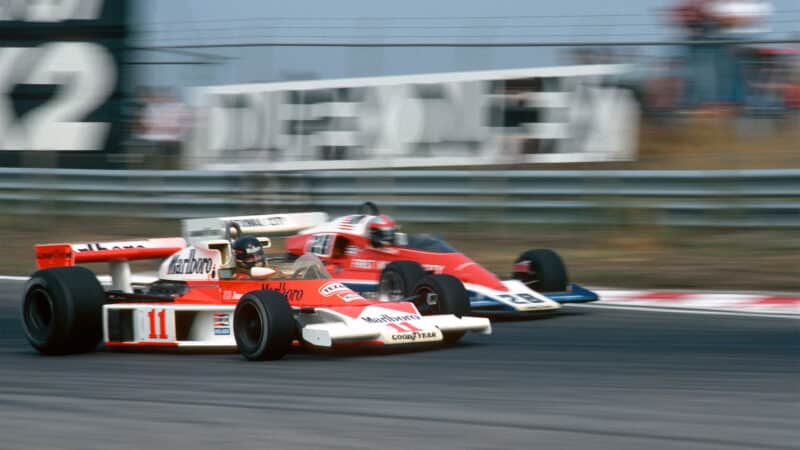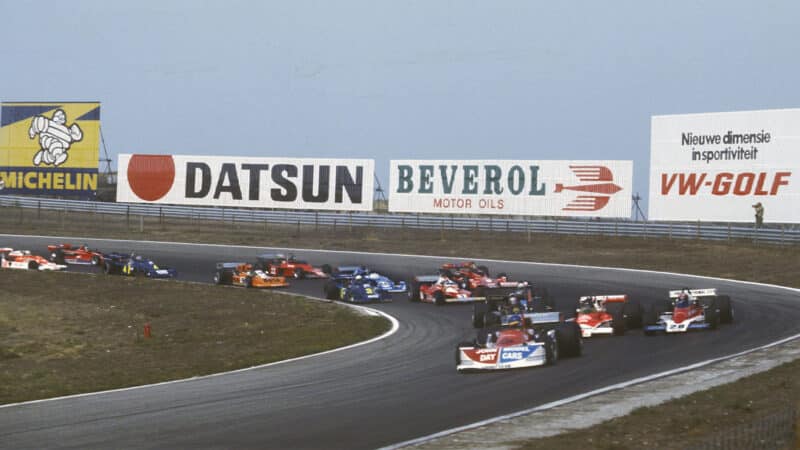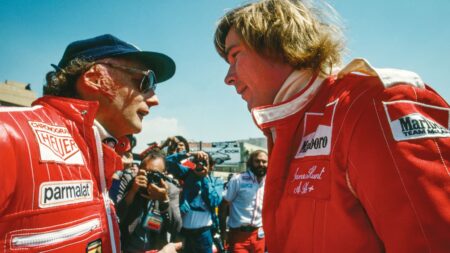At about a quarter distance – 20-odd laps into the 75-lap race – Watson was “getting happy with my car, settling down, settling in” and he began to try to pass the McLaren ahead. Lap after lap he drew level with Hunt on the approach to Tarzan, but lap after lap Hunt hugged the inside line under braking, then gradually lessened his steering lock through that long, long corner, forcing Watson out onto the sandy grass. It was a robust, gritty, red-blooded dogfight. Twelve months later, in the 1977 Dutch Grand Prix, Hunt would do the exact same thing in the exact same place to Mario Andretti, nerfing him off and ending his own race, triggering a flaming row afterwards; but in 1976 the more phlegmatic Wattie merely regrouped and mounted another attack, again and again. It was intense, and it lasted many laps, but Hunt held firm all the while.
Suddenly, however, one of his McLaren’s front brake ducts came loose, it began flapping in the air stream, and, even in that era of comparatively rudimentary aero science, it badly affected the car’s handling. Hunt was now battling unholy understeer in some places and fearsome oversteer in others. Even so, he held Watson at bay. He might not have succeeded in doing so until the end of the race, for Wattie was sitting pretty behind him, biding his time, but, just as he was planning his next move, he found himself unable to hook fifth gear, and, soon after, the Penske’s Hewland FGA400 gearbox gave up altogether: DNF.
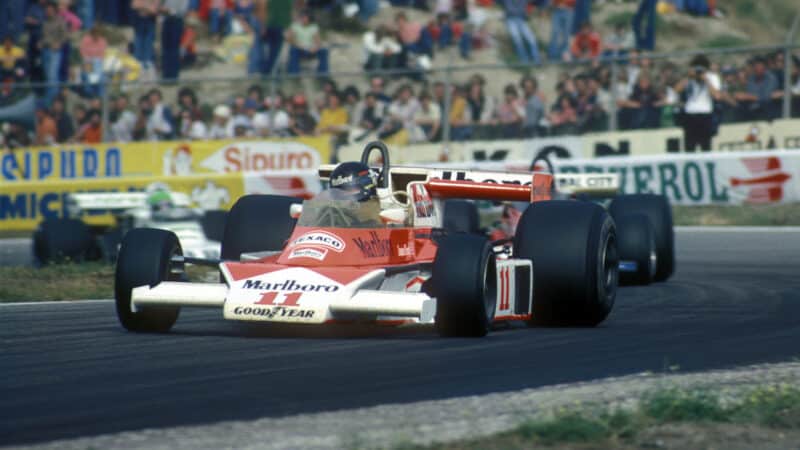
Hunt battled with a recalcitrant brake duct throughout the race, but still came through to win
Grand Prix Photo
Was Hunt home and dry now? He was not. Having taken a couple of Aspirins just before the off, Regazzoni had been sixth on lap one, but since then he had been quietly picking up places, passing Tom Pryce’s Shadow on lap three, Andretti’s Lotus on lap eight, and Peterson’s March on lap 18. Now, with Watson out of the way, there was clear road between his Ferrari 312 T2’s trademark unpainted aluminium front wing and Hunt’s increasingly loose McLaren M23. Moreover, Andretti was now pushing Regazzoni hard – “My chassis was workin’ bitchin’,” he said later – and the last 10 laps duly became a three-car battle for the lead. Andretti said after the race that he thought he could perhaps have won – his Lotus was now working visibly better than Hunt’s leading McLaren or Regazzoni’s second-placed Ferrari – but Clay was known to be notoriously ‘wide’ in his defence, was under huge pressure from Enzo Ferrari to steal points from McLaren’s annoying Englishman who kept winning races, so today the usually pugnacious American let caution be the better part of valour.
On the last lap they were nose to tail, all three of them, but Hunt was now slip-sliding all over the road in his efforts to stay ahead. He never made a mistake but, even so, he needed the help of Alan Jones, with whom he was friendly, and whose Surtees they caught and lapped on that ragged final tour. Jones let Hunt past easily enough, but he then held Regazzoni up, giving the Italian-Swiss badass some of the ‘elbows out’ medicine with which he had dosed so many, so many times, over so many years. Well, Jones’s Surtees was festooned with Durex logos, let’s not forget, so you could say that his attitude to Regazzoni’s efforts to pass him was fittingly prophylactic!
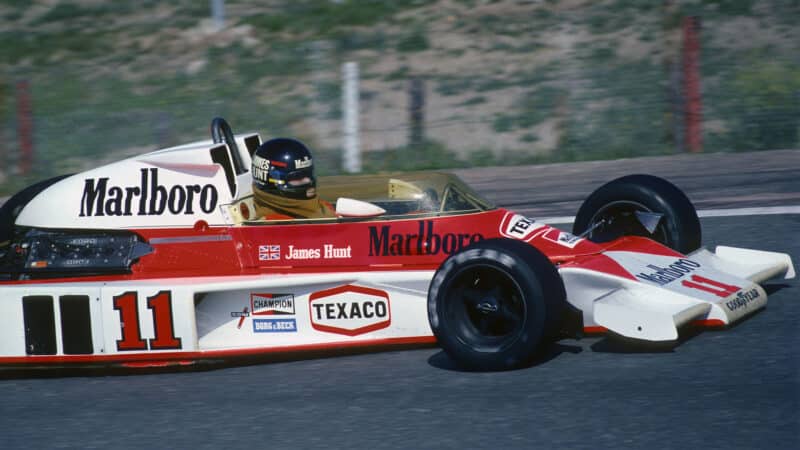
Race was key in Hunt’s chase for the title
Grand Prix Photo
In the end Hunt won, just 0.92sec ahead of Regazzoni, who was in turn only 1.17sec ahead of Andretti. James had driven stoutly and unerringly, winning in a car that had not been the quickest at any point and had been hobbled in the later stages. In so doing he had closed to within just two points of Lauda’s total (58 against 56). It was his 29th birthday, too. One can only imagine his celebrations in Amsterdam that evening.
I will leave you with two sentences from legendary racing journalist Pete Lyons’ Autocourse report. Of Hunt’s long battle with Watson: “Lunging, chopping, opposite-locking and banging wheels, the two fastest men in F1 that day fought like rabid dogs.” Of the race itself: “By the fifth lap it was already the best grand prix of the year, and by the 10th it was one of the best ever.” Two weeks later, the F1 circus rolled into Monza. Against all odds, Lauda was not only alive but ready to race. He did so, heroically. But that is another story.
